Commemorating the 138th anniversary of José Rizal’s trip along the Danube River.
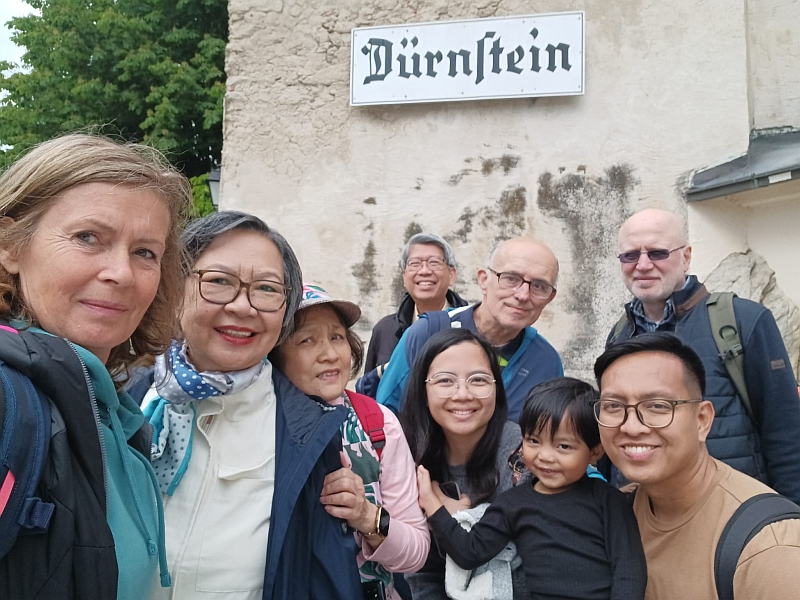
Selfie by Elke Pickert (left), the great-great-granddaughter of Ferdinand Blumentritt and 9-time Austrian champion and record holder in large-caliber sport shooting. She spends her free time driving her dirt bike, hiking, mountain biking and ski touring in the Tyrolian mountains.
On May 25 at 8:30 a.m., the excursion boat Kaiserin Elisabeth operated by DDSG Blue Danube GmbH departed from Danube Marina.
However, Rizal together with Maximo Viola did not leave from this point, but from the Danube Canal near Schwedenplatz and the Hotel Metropole.

At approximately 2,860 km, the Danube is the second longest river in Europe after the Volga.
Vienna lies on the upper reaches of the Danube. Before extensive regulation, the Danube branched into many arms. As the Danube originates in the rain-rich Alps, it carries a lot of water. Snowmelt in the mountains and heavy rainfall often caused flooding. This made the Danube very dynamic and caused it to change course repeatedly. To reduce the risk of flooding, the Danube was regulated twice at great expense.
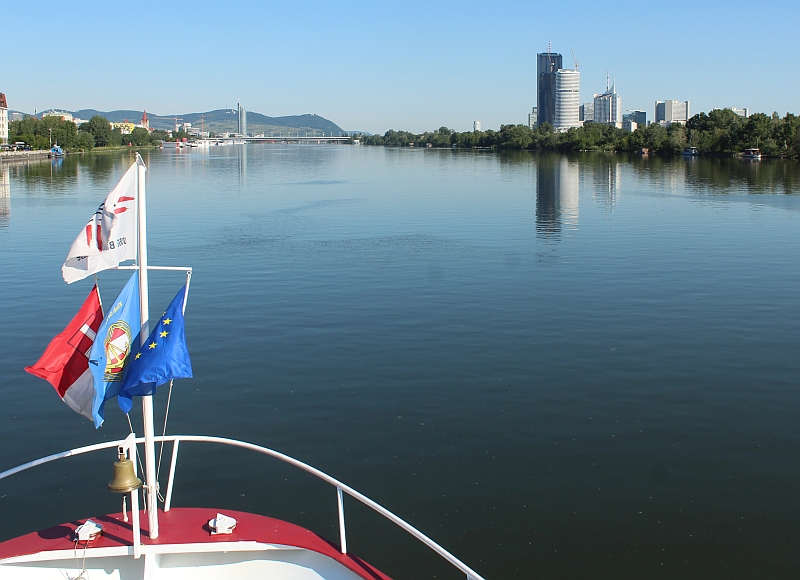
In the 1870s, the current main stream, known as the „Donaudurchstich“, was created as part of the First Vienna Danube Regulation; of the former branches, mainly the Danube Canal and the Old Danube remained. From the 1970s onwards, the floodplain created in the 1870s next to the main stream was replaced by the New Danube as part of the Second Vienna Danube Regulation.
After a short time, our group was able to admire the skyline of Vienna, which was a wonderful sight.
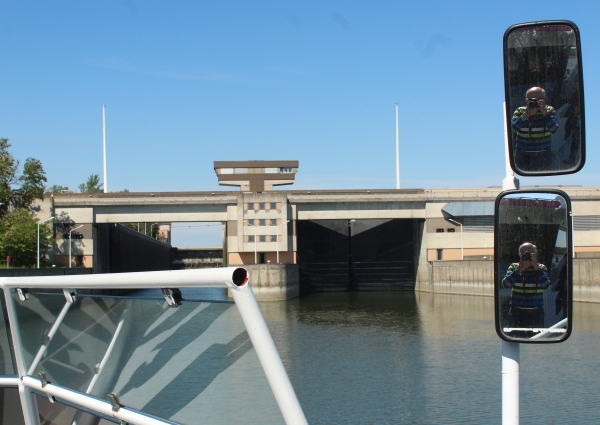
On the way, we passed two Danube power plants, where we were able to experience a very impressive passage through the locks.
The first was the Greifenstein Danube power plant, which began operating as an electricity plant in 1985. Due to the regulation of the Danube in Vienna at the end of the 19th century, the Danube had dug deeper and deeper into the riverbed, causing the groundwater level on the left side of the Danube to drop.
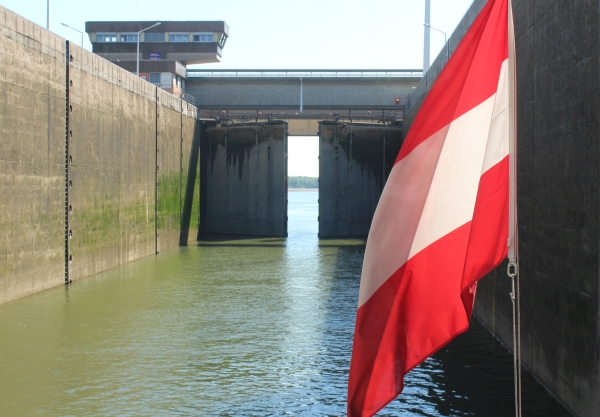
The Stockerauer Au was threatened with drying out. During the construction of the power plant, an irrigation system was built to ensure natural fluctuations in the water level. A near-natural bypass channel north of the Danube serves as a fish migration aid. The Greifenstein power plant currently provides more than 1700 GWh per year.
Approximately twenty kilometers before Krems, we reached the Altenwörth Danube hydroelectric power plant. It is the most powerful Austrian Danube power plant and was built between 1973 and 1976.
Between 2020 and 2022, a fish migration aid was installed in the area of the old arm. The 12.5-kilometer-long bypass channel around the dam is the longest fish migration aid in Lower Austria.
The Altenwörth power plant currently generates more than 1900 kWh, making it the largest power plant on the Danube. This power plant generates around one-sixth of the electricity produced on the Austrian Danube.
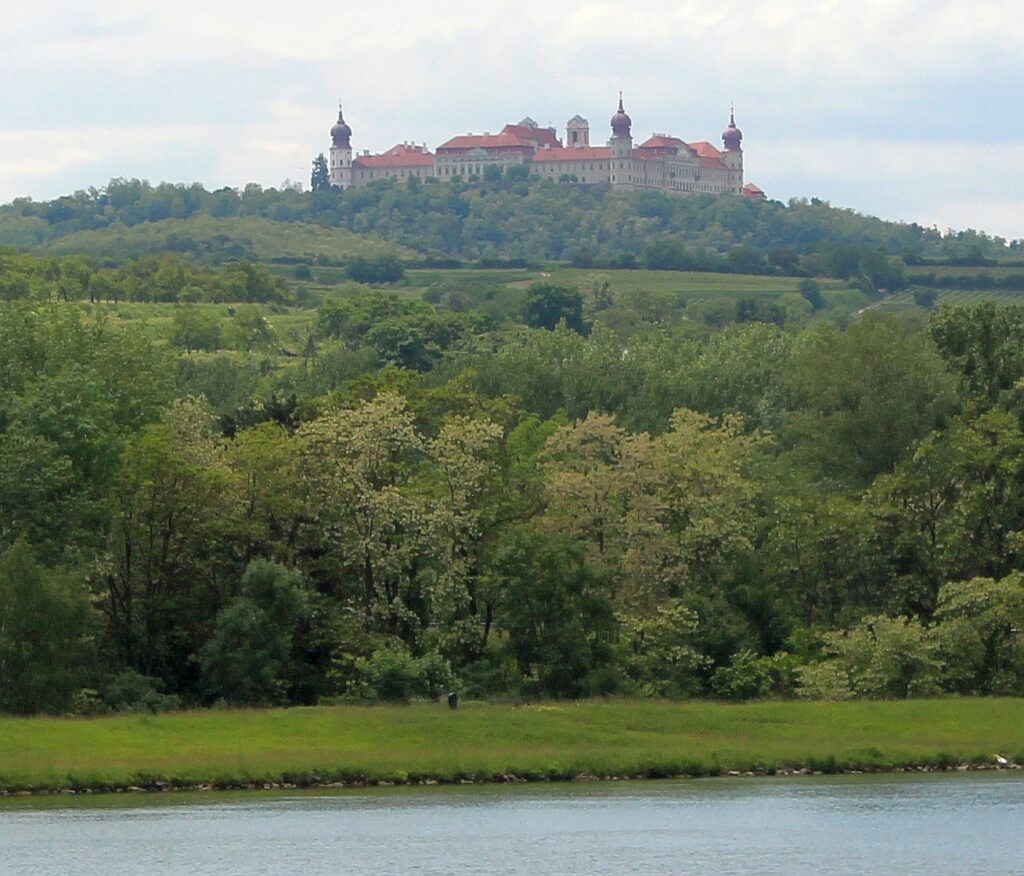
Approximately one hour before arriving in Dürnstein, we could see the impressive Göttweig Abbey on the left. Göttweig Abbey is a Benedictine monastery belonging to the Austrian Benedictine Congregation. In 2000, it was added to the UNESCO World Heritage List as part of the Wachau Cultural Landscape with Melk Abbey, Göttweig Abbey, and the Old Town of Krems.
„The monastery – also known as the „Austrian Montecassino“ because of its magnificent mountain location, reminiscent of the famous italien Abbey – was founded in 1083 as a monastery for a community of canons who lived according to the Rule of Augustine. Göttweig was handed over to the Benedictines in 1094.“ (Text: Abbey Göttweig).
At about the same time as Rizal and Viola 138 years ago, we reached our destination, Dürnstein:
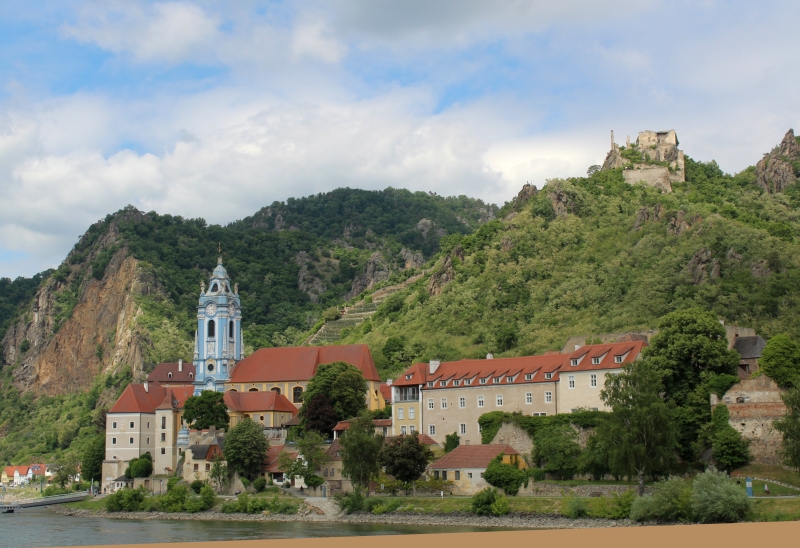
„The ancient Kuenringer City is an absolutely essential destination on the bank of the Danube River where tradition and beauty meet in an unparalleled manner. The landscape is characterized by the natural beauty of the ancient vineyards, the pleasant climate and the numerous cultural landmarks. Enjoy the wine from the Wachau during your stay in a charming wine tavern or in the shady garden of one of our restaurants.“ (Text: City of Dürnstein).
See: https://www.duernstein.at/en/about-duernstein
